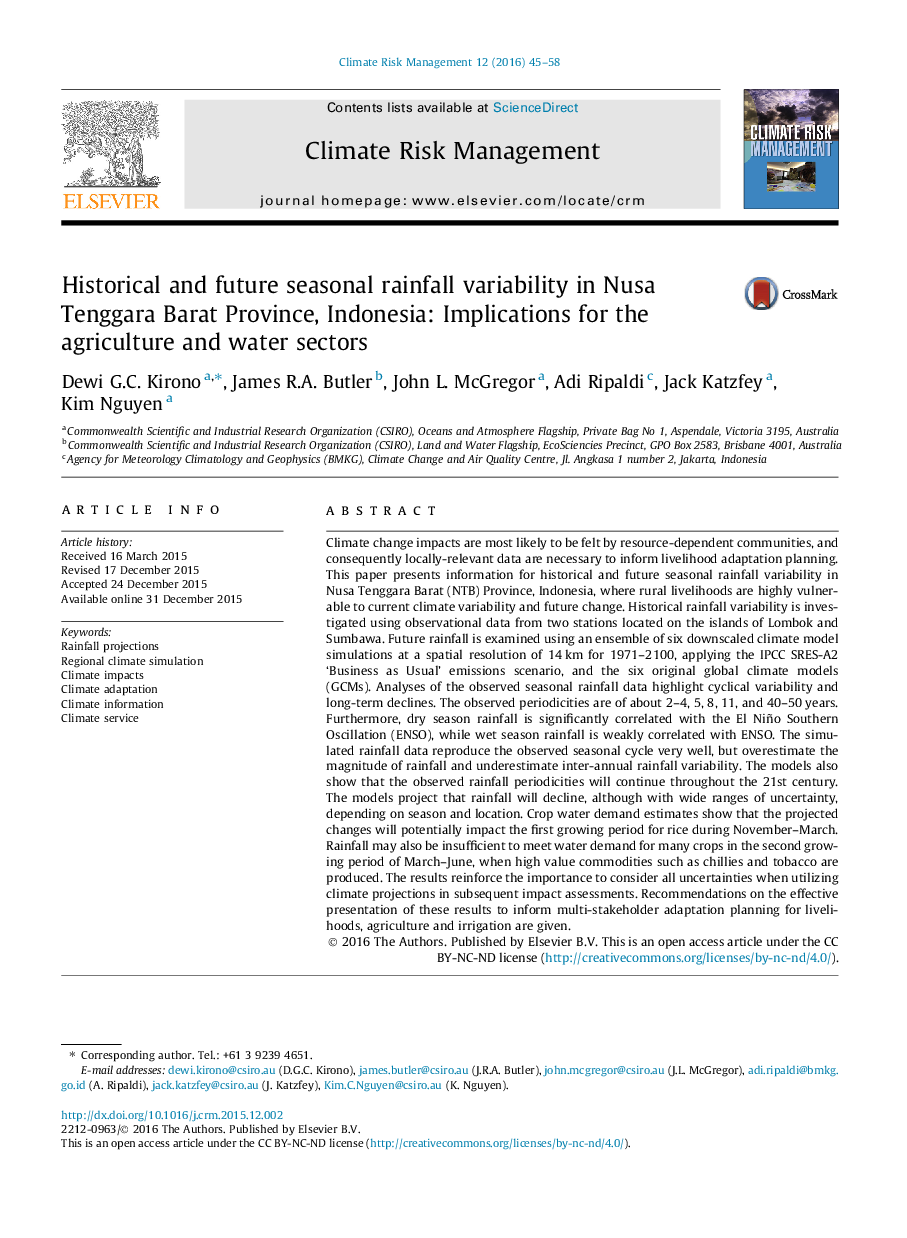| کد مقاله | کد نشریه | سال انتشار | مقاله انگلیسی | نسخه تمام متن |
|---|---|---|---|---|
| 1051194 | 1484880 | 2016 | 14 صفحه PDF | دانلود رایگان |
Climate change impacts are most likely to be felt by resource-dependent communities, and consequently locally-relevant data are necessary to inform livelihood adaptation planning. This paper presents information for historical and future seasonal rainfall variability in Nusa Tenggara Barat (NTB) Province, Indonesia, where rural livelihoods are highly vulnerable to current climate variability and future change. Historical rainfall variability is investigated using observational data from two stations located on the islands of Lombok and Sumbawa. Future rainfall is examined using an ensemble of six downscaled climate model simulations at a spatial resolution of 14 km for 1971–2100, applying the IPCC SRES-A2 ‘Business as Usual’ emissions scenario, and the six original global climate models (GCMs). Analyses of the observed seasonal rainfall data highlight cyclical variability and long-term declines. The observed periodicities are of about 2–4, 5, 8, 11, and 40–50 years. Furthermore, dry season rainfall is significantly correlated with the El Niño Southern Oscillation (ENSO), while wet season rainfall is weakly correlated with ENSO. The simulated rainfall data reproduce the observed seasonal cycle very well, but overestimate the magnitude of rainfall and underestimate inter-annual rainfall variability. The models also show that the observed rainfall periodicities will continue throughout the 21st century. The models project that rainfall will decline, although with wide ranges of uncertainty, depending on season and location. Crop water demand estimates show that the projected changes will potentially impact the first growing period for rice during November–March. Rainfall may also be insufficient to meet water demand for many crops in the second growing period of March–June, when high value commodities such as chillies and tobacco are produced. The results reinforce the importance to consider all uncertainties when utilizing climate projections in subsequent impact assessments. Recommendations on the effective presentation of these results to inform multi-stakeholder adaptation planning for livelihoods, agriculture and irrigation are given.
Journal: Climate Risk Management - Volume 12, 2016, Pages 45–58
